- Home
- Paula Byrne
The Real Jane Austen
The Real Jane Austen Read online
The Real Jane Austen
Paula Byrne
THE REAL JANE AUSTEN
A Life in Small Things
Paula Byrne
Dedication
For my very own Elinor (Ellie)
Epigraph
The room was most dear to her, and she would not have changed its furniture for the handsomest in the house, though what had been originally plain, had suffered all the ill-usage of children – and its greatest elegancies and ornaments were a faded footstool of Julia’s work, too ill done for the drawing-room, three transparencies, made in a rage for transparencies, for the three lower panes of one window, where Tintern Abbey held its station between a cave in Italy, and a moonlight lake in Cumberland; a collection of family profiles, thought unworthy of being anywhere else, over the mantelpiece, and by their side, and pinned against the wall, a small sketch of a ship sent four years ago from the Mediterranean by William, with H.M.S. Antwerp at the bottom, in letters as tall as the main-mast.
Mansfield Park, VOL 1, CH. 16
[S]he seized the scrap of paper … locked it up with the chain, as the dearest part of the gift. It was the only thing approaching to a letter which she had ever received from him; she might never receive another; it was impossible that she ever should receive another so perfectly gratifying in the occasion and the style. Two lines more prized had never fallen from the pen of the most distinguished author – never more completely blessed the researches of the fondest biographer. The enthusiasm of a woman’s love is even beyond the biographer’s.
Mansfield Park, VOL 2, CH. 9
CONTENTS
Dedication
Epigraph
Author’s Note
Prologue: Captain Harville’s Carpentry
1. The Family Profile
2. The East Indian Shawl
3. The Vellum Notebooks
4. The Subscription List
5. The Sisters
6. The Barouche
7. The Cocked Hat
8. The Theatrical Scenes
9. The Card of Lace
10. The Marriage Banns
11. The Ivory Miniature
12. The Daughter of Mansfield
13. The Crimson Velvet Cushions
14. The Topaz Crosses
15. The Box of Letters
16. The Laptop
17. The Royalty Cheque
18. The Bathing Machine
Epilogue
Insert
Credits
Notes
Index
Acknowledgments
About the Author
Also by Paula Byrne
Copyright
About the Publisher
AUTHOR’S NOTE
Each chapter begins with a description of the image that sets its theme, illustrated in plate sections throughout the book. Jane Austen’s novels are quoted from the Oxford World’s Classics editions, but references in the endnotes take the form of volume and chapter number, so as to make it possible to locate the relevant passage in other editions. So, for example, 1.8 means chapter 8 of volume 1 (Persuasion and Northanger Abbey were each originally published in two volumes, the other four completed novels each in three volumes). The irregular spellings in Austen’s letters and youthful writings are retained (most famously, ‘Love and Freindship’, but also ‘beleive’, ‘neice’, ‘Lime’ for Lyme, ‘Keen’ for the actor Kean, and so on). The endnotes also acknowledge, at relevant points, the work of the many wonderful Jane Austen scholars on whom I have drawn.
In order to give readers an idea of monetary values – whether for the cost of a card of lace or the worth of Jane Austen’s royalty cheque – I have given 2011 equivalents derived from the Bank of England’s online historical inflation calculator (and with a dollar equivalent on the rough basis of $1.50 to a pound). It must, however, be remembered that these are merely indicative sums: over the centuries inflation has been much greater for some things than others.
PROLOGUE
Captain Harville’s Carpentry
This is a watercolour of Lyme Regis on the southern coast of England. The cottages nestle on the hillside. An old stone breakwater leads down to the shoreline. A man and a woman are walking on the beach and a solitary figure is looking out to sea. A rowing boat is on its way out to a ship at anchor in the bay. The eye is drawn to an expansive view of sloping cliffs and open sky.1
Jane Austen loved the sea. The story goes that when her father announced in December 1800 that he was leaving his position as rector of the parish of Steventon and retiring to Bath, she was so shocked that she fainted. She reconciled herself to the move only when the family promised to take a holiday by the seaside every summer. In 1801 and 1802 they went to Sidmouth and Teignmouth in Devon. In 1803 and 1804 it was the turn of Lyme Regis.
‘The young people were all wild to see Lyme.’ When they arrive, in chapter eleven of Persuasion, Jane Austen describes the little seaside resort in the style of a tour guide: the pleasant bay, the new-fangled bathing machines, the famous Cobb, the beautiful line of cliffs stretching out to the east of the town, the charms of ‘the immediate environs’ – the high sweep of countryside around Charmouth, ‘the woody varieties of the cheerful village of Up Lyme, and, above all, Pinny, with its green chasms between romantic rocks … a scene so wonderful and so lovely is exhibited, as may more than equal any of the resembling scenes of the far-famed Isle of Wight’.2
‘These places must be visited, and visited again to make the worth of Lyme understood,’ Jane Austen tells her readers. She had visited Lyme at least twice, on one occasion witnessing a fire that destroyed a number of houses. When she describes the place in her novel, she is visiting it yet again, this time in her imagination. Her description is the literary equivalent of the engravings of popular tourist sites that were readily obtainable in the burgeoning print market of the age – the Regency version of the picture postcard.
Jane Austen cared a great deal about accuracy. She wanted her novels to be true to life. When reading a draft of a novel by her niece Anna, she pointed out that it was an error to portray people in Dawlish gossiping about the news from Lyme: ‘Lyme will not do. Lyme is towards 40 miles distance from Dawlish and would not be talked of there.’3 Her novels were grounded in the real world. In order to create them, she drew upon the reality that she knew: the people, the places, the events. The celebrated fictional scene in which Louisa Musgrove nearly dies when being ‘jumped’ off the narrow steps of the Cobb is not based on a real incident, but it could not have been written if Jane Austen had not visited the real Lyme and memorized its topography.
The picturesque description of the romantic rocks of Lyme is not, however, her most common style. And in this case her passion for the sea perhaps led her to idealize the reality of the place. ‘I was disappointed in Lime,’ wrote her sister-in-law Mary to that niece Anna, ‘as from your Aunt Janes Novel I had expected it a clean pretty place, whereas it was dirty and ugly.’4
The fall on the Cobb, the bad-tempered exchange at Box Hill, the escape across the ha-ha from the grounds of Sotherton, the road-traffic accident with which her final unfinished novel begins: outdoor scenes in Austen’s novels are often dramatic excursions – involving misadventures, transgressions, arguments, misunderstandings, proposals – whereas her habitual location is indoors, within the world of polite, if barbed, conversation in drawing rooms and over dinner tables. Chapter eleven of Persuasion does not dwell for long on the seaside panorama. The narrative swiftly follows the visitors inside.
Not, however, into a great house of the kind that has become familiar in television and film adaptations of Austen’s novels (in which the houses are nearly always bigger than they should be). ‘Near the foot of an old pier
of uncertain date’5 on the seafront at Lyme there is a row of cottages. We enter a cramped but welcoming parlour. It is the home of Captain Harville, who has retired in poor health as the result of a severe wound incurred on naval service during the war that lasted for almost the whole of Jane Austen’s adult life. This snug little dwelling-place will be revisited later, but for a first glimpse of Austen’s art of minute observation consider a single detail:
Captain Harville was no reader; but he had contrived excellent accommodations, and fashioned very pretty shelves, for a tolerable collection of well-bound volumes, the property of Captain Benwick. His lameness prevented him from taking much exercise; but a mind of usefulness and ingenuity seemed to furnish him with constant employment within. He drew, he varnished, he carpentered, he glued; he made toys for the children, he fashioned new netting-needles and pins with improvements; and if every thing else was done, sat down with his large fishing-net at one corner of the room.
Anne Elliot will soon engage Captain Benwick in conversation about books, debating the relative merits of the two most fashionable poets of the day, Sir Walter Scott and Lord Byron. She gently suggests that romantic poetry might not be the most healthy reading for a man with a broken heart such as Benwick – though she sees the irony of her admonitions to ‘patience and resignation’ in the light of her own broken heart.
But it is Captain Harville’s carpentry that sticks in the mind: the prettily fashioned shelves, the varnish, the glue, the toys for the children. Jane Austen grew up in a house of books and reading, but she also came from a family that valued handiwork, the craft of making things, whether with needle or wood.
Captain Benwick reading poetry aloud while Captain Harville mends his net is a little image of how she imagined a secure home and a sense of belonging. Her family circle was a place of quick tongues, laughter and moving fingers, with a novel being read aloud and everyone busy at their needlework. Both her world and her novels can be brought alive through the texture of things, the life of objects.
Sketch of a Royal Navy ship by Jane Austen’s nephew, Captain Herbert Austen
In January 1852 Admiral Francis Austen received a letter from the daughter of the President of Harvard University. ‘Since high critical authority has pronounced the delineations of character in the works of Jane Austen second only to those of Shakespeare,’ Miss Quincy began, ‘transatlantic admiration appears superfluous; yet it may not be uninteresting to her family to receive an assurance that the influence of her genius is extensively recognised in the American Republic.’6 She was writing because she wanted an autograph of the great novelist.
The Admiral was more than obliging. He was delighted to hear that the ‘celebrity’ of his late sister’s works had reached across the Atlantic. He sent not merely a signature but a whole Jane Austen letter. And he was happy to provide a character sketch of her. She was cheerful, not easily irritated, a little shy with strangers. Her natural reserve was sometimes misinterpreted as haughtiness. She was kind and funny, never failing to excite ‘the mirth and hilarity of the party’. She loved children and they loved her: ‘Her Nephews and Nieces of whom there were many could not have a greater treat than crouding around and listening to Aunt Jane’s stories.’
Miss Susan Quincy shared the contents of the Jane Austen letter with her sister, who was ‘quite carried off her feet’ with excitement. The conclusion, they agreed, could only be that Admiral Austen was so charming that ‘he must have been like Captain Wentworth when he was young’. Was Jane Austen’s brother really the inspiration for the hero of Persuasion? Miss Quincy communicated her sister’s response to the elderly Admiral. He replied that he was very flattered, but:
I do not know whether in the character of Captain Wentworth the authoress meant in any degree to delineate that of her Brother. Perhaps she might, but I rather think parts of Captain Harville’s were drawn from myself; at least the description of his domestic habits, tastes and occupations bear a considerable resemblance to mine.
Admiral Austen does not deny the possibility that there might be some element of himself – or of Jane’s other naval brother, Charles – in the character of Captain Wentworth. But he positively celebrates the fact that Captain Harville’s handiwork is his own.
When Francis Austen’s baby was born in 1807, he cut out the patterns for the infant’s night-clothes himself. On another occasion, according to his sister Jane, ‘he made a very nice fringe for the drawing room curtains’. Like Harville, he ‘turned silver’ to make needles for fishing nets. When Jane Austen watched her young nephews passing the evenings by making nets in which to catch rabbits, she described them as sitting ‘side by side, as any two Uncle Franks could do’.7 Jane also remembered her brother Frank, as she always called him, making ‘a very nice little butter-churn’.8 He was skilled at turning wood.
There can be no doubt that Captain Harville’s carpentry is both a compliment to Frank and a family joke. By acknowledging the allusion after Jane’s death, Admiral Austen is giving her readers warrant to make connections between the people his sister knew and the characters she created. By implication, he is also licensing us to make links between her novels and the places she went to (and those she heard about), not to mention the historical events through which she lived.
Yet in the ‘official’ family biography of Jane Austen, it is stressed that hers was an enclosed, sequestered world and that the characters in her novels were always generic types, never based on real individuals. The ground for this reading of her was laid by her brother Henry in the brief ‘Biographical Notice of the Author’ which prefaces her posthumously published novels Northanger Abbey and Persuasion: ‘Short and easy will be the task of the mere biographer. A life of usefulness, literature, and religion, was not by any means a life of event.’ Furthermore, ‘Her power of inventing characters seems to have been intuitive, and almost unlimited. She drew from nature; but, whatever may have been surmised to the contrary, never from individuals.’9
Henry’s denial of eventfulness and of drawing ‘from individuals’ was of a piece with the desire of the clerical Austens to be discreet, decorous and reticent. That was the image of Jane Austen herself that the family wished to establish in the public domain. They reinforced it in the Victorian era by means of a memoir published in December 1869 by James Edward AustenLeigh, son of another of her clergy brothers, James. Jane Austen was one of the wittiest of writers, but there are not many jokes in the official family record. Admiral Francis Austen was known for his lack of a sense of humour, but at least he manages to drop in a joke at the end of his second letter to Miss Quincy: ‘I am not a Vice Admiral, having for the last 3 years attained the higher rank of Admiral. I wish I could believe that in the change of rank I had left every vice behind me.’ Startlingly, here he seems to be remembering his sister’s most questionable joke, concerning ‘Rears, and Vices’ in the British navy. That was not the sort of subject to detain James Edward Austen-Leigh in his pious record of his aunt’s allegedly quiet life.
The family memoir inaugurated the tradition of full-length Jane Austen biography. It proceeded from cradle to grave at uneventful pace and with provincial calm. In the century and a half since it was compiled, devoted scholars have gathered many more details about Austen’s life. One hundred and sixty of her letters survive, as do the pocket books of family members, the diaries of acquaintances, the banking transactions of her father.10 With the benefit of such mundane material, biography after biography has followed the pattern of James Edward and tracked Jane Austen’s daily life from Steventon to Bath to Chawton to Winchester.11
This book is something different and more experimental. Rather than rehearsing all the known facts, this biography focuses on a variety of key moments, scenes and objects in both the life and work of Jane Austen. It does not begin where the official family record began, with the tracing of ancestry. It does not seek to foster the illusion that Austen knew little of the world. It recognizes the gaps in our knowledge as well as in the
documentary evidence. Several thousand of her letters are lost or destroyed and for some crucial years we know hardly anything of her whereabouts.
In addition, this biography follows the lead of Frank Austen rather than Henry. It suggests that, like nearly all novelists, Jane Austen created her characters by mixing observation and imagination. She drew on people she knew and experiences she went through. Captain Harville is not a portrait of Frank, but the fictional character is brought alive and made memorable by the adoption of a particularly charming characteristic of a real individual: his fondness for carpentry. When Austen writes about ideas – the virtues and vices of the British navy, the case against the slave trade, the Evangelical movement – she does so by creating memorable characters, not by writing sermons. Her sympathy for abolition may be inferred not only from what she writes in her letters about the campaigner Thomas Clarkson but also from the pro-slavery associations of two of her most monstrous characters, Mrs Norris and Mrs Elton.
Jane Austen loved nothing more than to talk about people. She knew a great deal about the lives of her extended family, her friends and her slighter acquaintances. When we tell the stories of these people’s lives, we suddenly see Austen on a much wider stage than that on which she is confined in the clerical brothers’ version of her life. We are transported to the East Indies and the West, to the guillotine in revolutionary Paris, to a world where there is high-society scandal one moment and a petty case of shoplifting the next. This biography follows Austen on her travels, which were more extensive than is often recognized, and it sets her in contexts global as well as English, urban as well as rural, political and historical as well as social and domestic. These wider perspectives were of vital and still under-estimated importance to her creative life.

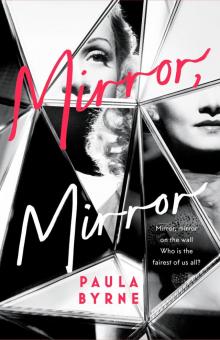 Mirror, Mirror
Mirror, Mirror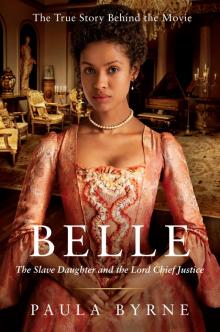 Belle
Belle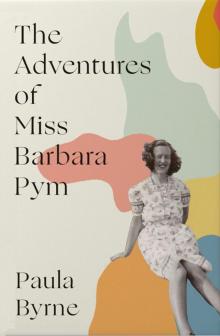 The Adventures of Miss Barbara Pym
The Adventures of Miss Barbara Pym The Real Jane Austen
The Real Jane Austen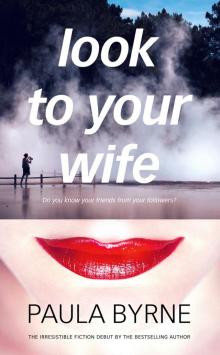 Look to Your Wife
Look to Your Wife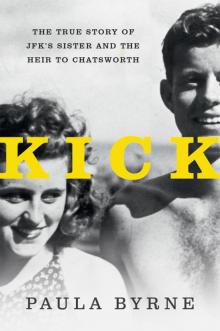 Kick
Kick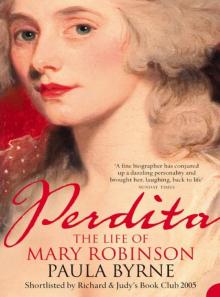 Perdita
Perdita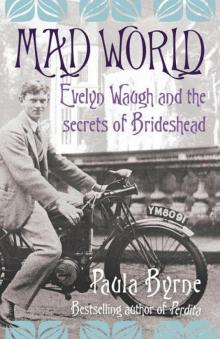 Mad World: Evelyn Waugh and the Secrets of Brideshead (TEXT ONLY)
Mad World: Evelyn Waugh and the Secrets of Brideshead (TEXT ONLY)